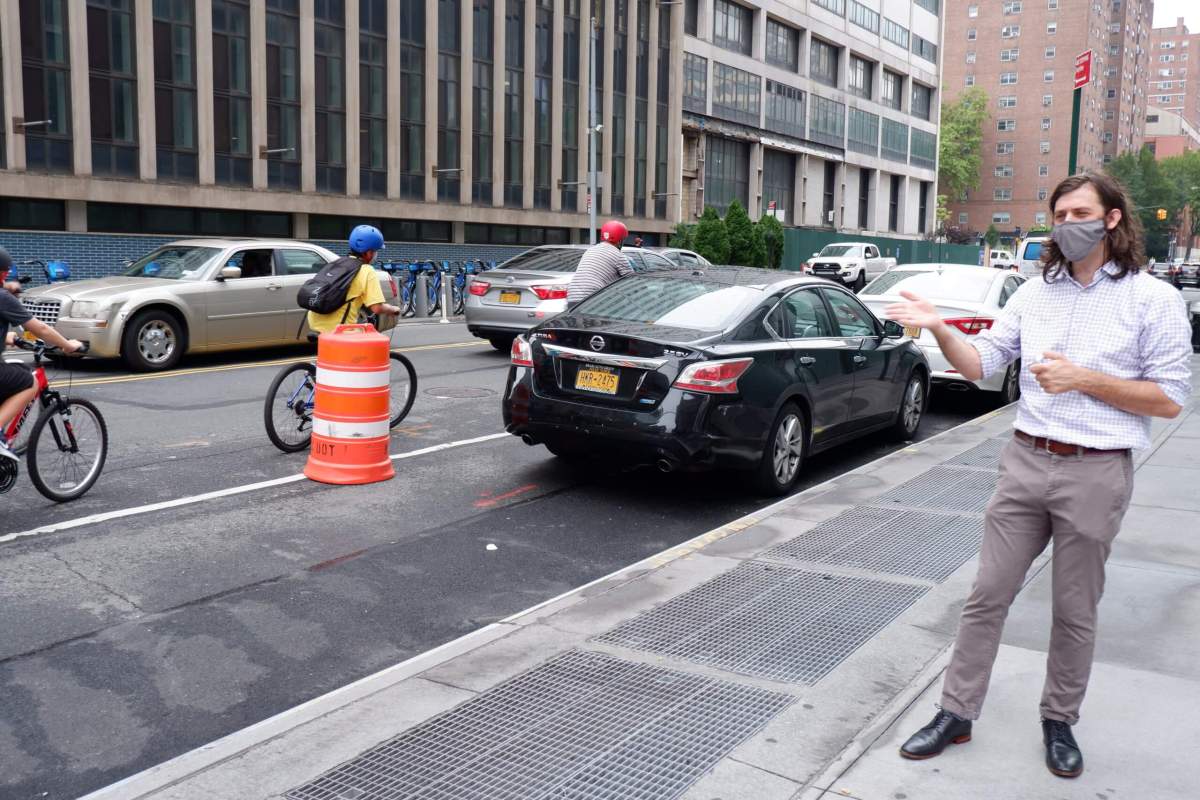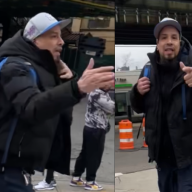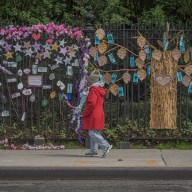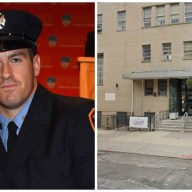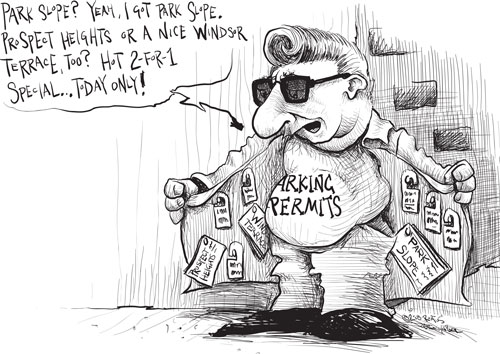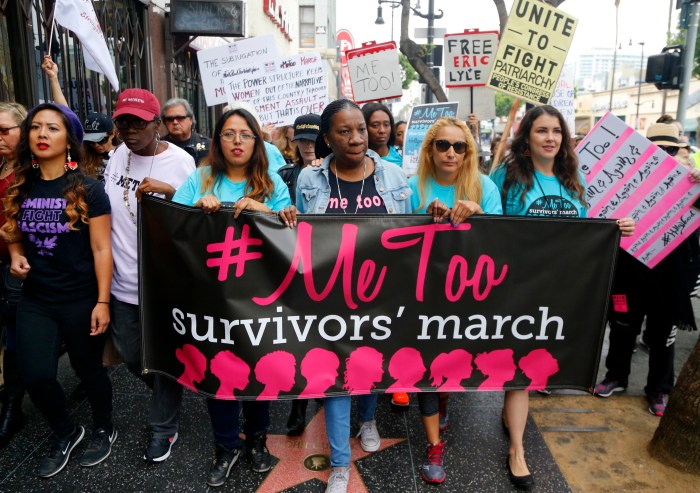Entering the last days of his mayorship, Bill de Blasio announced on Thursday new digital parking placard readers are rolling out in north Brooklyn next week, hopefully cracking down on illegal parking by city employees.
“Placard abuse clogs our streets and weakens New Yorkers’ trust in the government that serves them,” de Blasio said, in a release. “There’s no place for it in our city, and I’m proud to take this next step toward a fairer and more accountable system.”
The city’s Department of Transportation issues parking permits, or placards, to some city employees. The placards are intended to allow employees to park in restricted areas to more easily take care of their assigned duties.
Many employees, though, use their placards to park illegally on sidewalks, in crosswalks, or in no-parking zones, causing an inconvenience at best and a safety hazard for pedestrians and other drivers at worst.
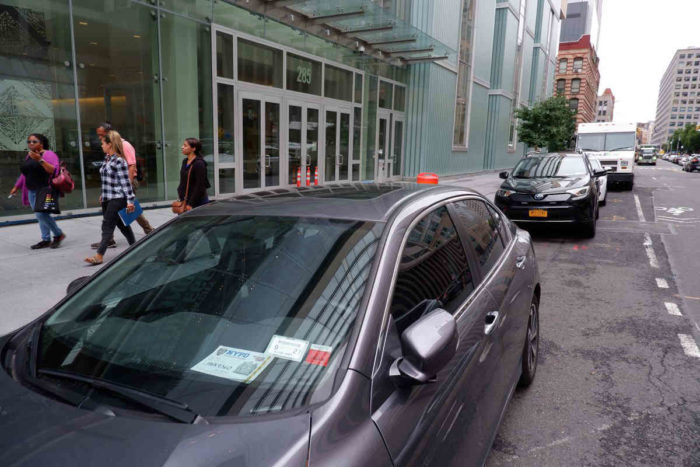
Beginning next week, the New York City Police Department’s traffic officers in north Brooklyn will be using digital placard readers to scan placards and determine whether the permit is legitimate, is being used in the car it was issued for, and is being used “in accordance with the privileges it confers,” according to the mayor’s office.
“Placard abuse has no place in New York City and we are grateful to Mayor de Blasio and the NYPD for launching this program to help strengthen enforcement and keep our streets safe,” said DOT commissioner Hank Gutman. “The DOT has joined our sister agencies in sharing our placard data with the NYPD to help end this type of corruption.”
At least 43,000 placard abuse summonses have been issued in 2021. According to city data, no action is taken in the majority of placard abuse reports. Misusing officially-issued permits isn’t the only issue: some city employees also illegally use city-issued uniforms or equipment in a bid to keep ticket-issuing officers away from their vehicles.
At Myrtle/Wyckoff, a major bus terminal, so it seems like @MTA employees park wherever they want.#CultureOfCorruption pic.twitter.com/V43U3CQokO
— placard corruption (@placardabuse) December 12, 2021
The targeted rollout will have a “special emphasis” in Downtown Brooklyn, and the readers are expected to be in use in midtown Manhattan by mid-January and across the city by the end of the month.
De Blasio’s successor, Eric Adams, who takes office next month, has frequently been criticized for allowing his employees to park illegally at Brooklyn Borough Hall. The wide plaza in front of the building was frequently littered with vehicles during his tenure as borough president, and Adams went so far as to defend the practice at a town hall in 2019.
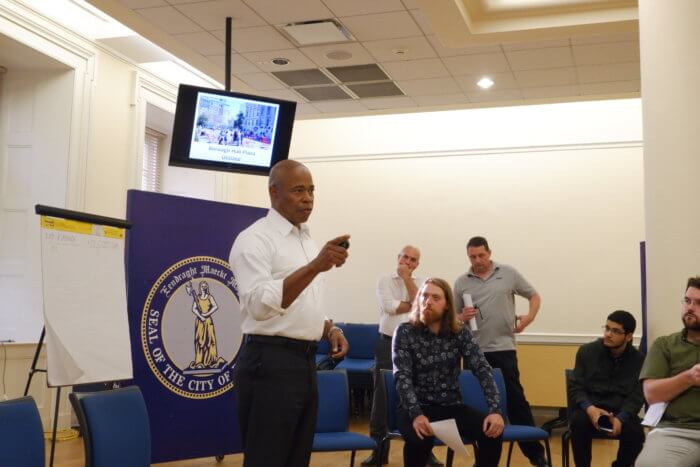
Later that year, the City Council voted to approve a package of bills designed to crack down on placard abuse. The laws forced the NYPD to monitor frequent sites of placard abuse and document their efforts to enforce rules, allowed New Yorkers to report permit abuse to 311, with photos to prove the transgression, and set stricter penalties for those found to be improperly using their permits. One bill specifically disallowed permit holders from blocking bus and bike lanes, fire hydrants, sidewalks, and crosswalks.
By fall of 2020, though, the laws were barely being enforced, The City reported. Last October, the City Council wrote a letter to NYPD commissioner Dermot Shea, saying officers were failing to properly investigate and take action on illegally-parked vehicles.
“The NYPD recognizes that we play a valuable role in reducing the times when drivers make calculated decisions to use a placard to park in violation of parking rules,” said NYPD transportation chief Kim Y. Royster, in a release. “These decisions not only jeopardize the safety of other road users and cause congestion, but also erode the public’s trust in the NYPD and other government employees.”


